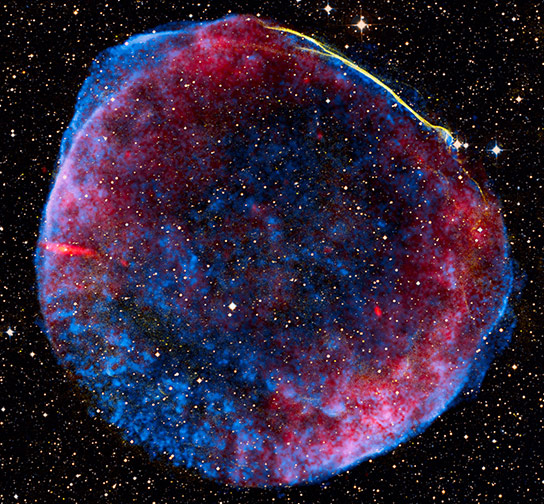
A false-color, multi-wavelength image of the remnant material from supernova SN1006, an explosion so bright when it occurred in the year 1006 that it reportedly cast shadows at night. New research on SN1006 argues that supernova remnants like this one are likely sources for cosmic rays, the extremely high energy particles that bombard Earth. Credit: NASA Chandra X-ray Observatory
In a newly published study, astronomers investigate the links between supernova remnants and cosmic rays. Using a new optical spectrometer to analyze the shock activity at the outer edge of supernova SN1006, the astronomers report finding gas motions of over five thousand kilometers per second and evidence for the presence of fast-moving protons and electrons.
In the spring of the year 1006, one thousand and seven years ago this April, observers in China, Egypt, Iraq, Japan, Switzerland (and perhaps North America) reported seeing what might be the brightest stellar event in recorded history: a supernova (“SN1006”) that was relatively close to Earth, only about seven thousand light-years away. It was reportedly so bright that it cast shadows at night. In 1965, radio astronomers identified the residue of this event, a so-called supernovae remnant, in the form of a sixty-light-year diameter shell of glowing gas. Current models of the cataclysm find that it resulted when two white dwarf stars (each being a late stage of a star’s life) merged together.
Supernovae are critical to life in the universe. They and their progenitor stars create most of the elements in the universe, and their explosive deaths disburse them into interstellar space where they can later be incorporated into new stars and planets. Supernovae are also active research topics because their bright emission enables them to be used as probes of the very distant universe. Not least, supernovae are astrophysical laboratories for the study of very high-velocity shocks and the physics of particles under extreme conditions.
CfA astronomer John Raymond and seven colleagues, writing in the latest issue of Science magazine, investigate the links between supernova remnants and cosmic rays – the very rapidly moving nuclear particles that impact the earth from space. Cosmic rays can have energies millions of times larger than the most energetic particles produced in man-made particle accelerators, but astronomers are not sure where they come from or how they are accelerated to such fantastic energies.
Supernovae have been a likely suspect for over fifty years because their powerful shocks were thought to be capable of accelerating subatomic particles to high energies. In their new paper, the scientists used a new optical spectrometer to analyze in detail the shock activity at the outer edge of SN1006. They report finding gas motions of over five thousand kilometers per second and evidence for the presence of fast-moving protons (as well as for fast-moving but much less massive electrons). The team suggests that such protons may be the seed particles for cosmic rays once they are further accelerated by the shocks.
The study with its new techniques offers powerful new evidence towards clarifying the role of supernova remnants in the production of the mystery cosmic rays.
Reference: “An Integral View of Fast Shocks Around Supernova 1006” by Sladjana Nikolić, Glenn van de Ven, Kevin Heng, Daniel Kupko, Bernd Husemann, John C. Raymond, John P. Hughes and Jesús Falcón-Barroso, 14 February 2013, Science.
DOI: 10.1126/science.1228297

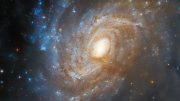
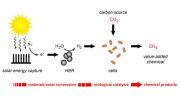

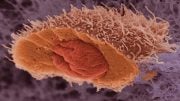
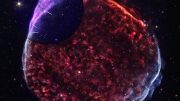
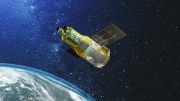
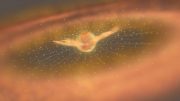

Be the first to comment on "Astronomers Investigate the Links between Supernova Remnants and Cosmic Rays"